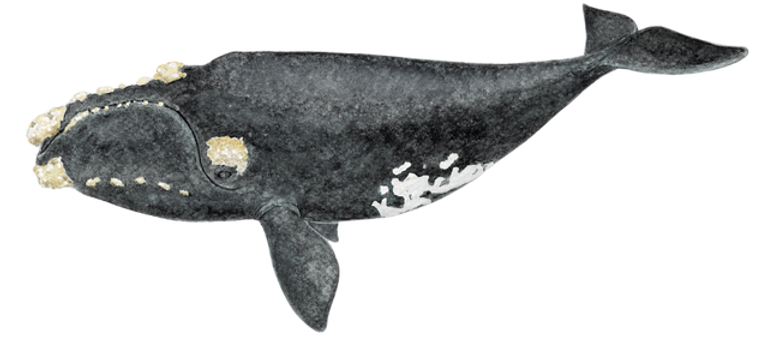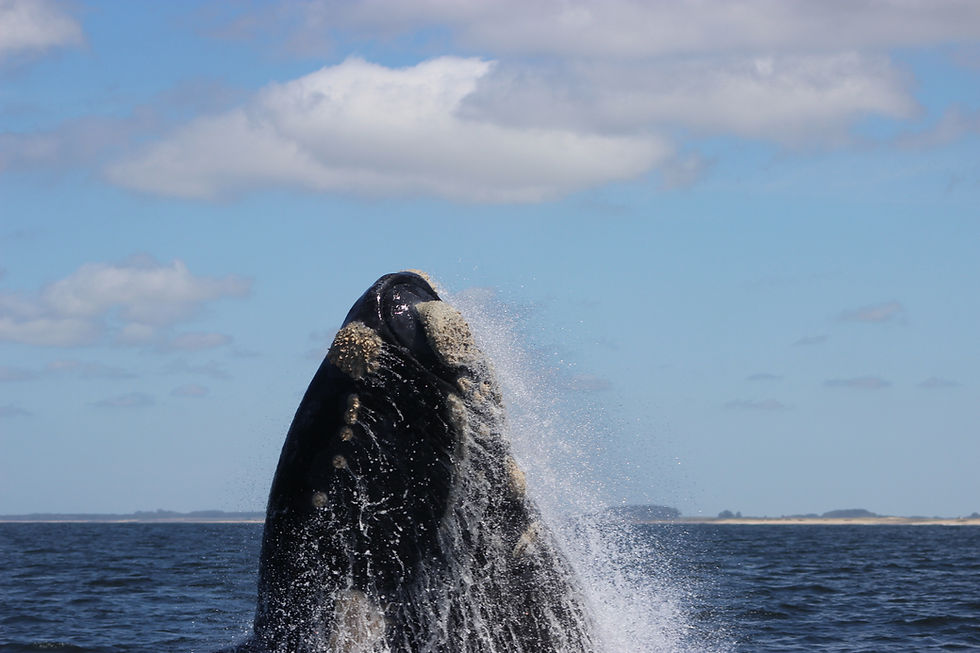top of page
Southern Right Whale

Morphology
Adaptations to life at sea

No dorsal fin
Two spiracles
located in the part
top of the skull
Calluses on
the head,
jaw and
over the eye
White spot
in the womb
Gray
dark
Length
13-16 meters
Weight
44 - 77 tons
Pectoral fins
long and wide
Characteristic V-blowing
The hot, humid air condenses and
forms a cloud of steam and comes out along with the water accumulated in the spiracles
LINE
Main propulsion
Fibrous, without bone structure, with strong muscles in the caudal peduncle
BREATHING
Small but efficient lungs
With each breath, the whale renews 80% of its air.
FUR
Hypodermis
40cm thick fat layer. Temperature regulation and energy reserve.
DERMIS
Dense and vascularized tissue, facilitates body thermoregulation.
EPIDERMIS
Smooth and elastic, without sebaceous and sweat glands for greater hydrodynamics.
SKELETON
PECTORAL FINS
Articulated bones in fingers, used to change direction while swimming.
CERVICAL
The cervical vertebrae are fused to support the weight of the skull.
RIBS
Quite mobile, between 2 and 3 meters.




1/2
Guardians of the Atlantic Ocean
They are extremely sociable and curious with humans.

Feeding
They feed on plankton: krill, copepods and crustacean larvae.
During the reproductive season, they often experience long periods of starvation.
They can feed at the surface by swimming slowly over schools of plankton with their mouths open, and also by diving deep.

Where
lives?

Inhabits all oceans
around the South Pole.

Whale and Dolphin Sanctuary
They migrate to feeding areas in cold, offshore waters.
They migrate to breeding areas in warm, coastal waters.
Migratory/Seasonal Presence
It visits the Uruguayan coasts during the austral autumn and winter to breed and wean the calves born the previous year.
PROBABILIDAD DE ENCUENTRO
ALTA
bottom of page
